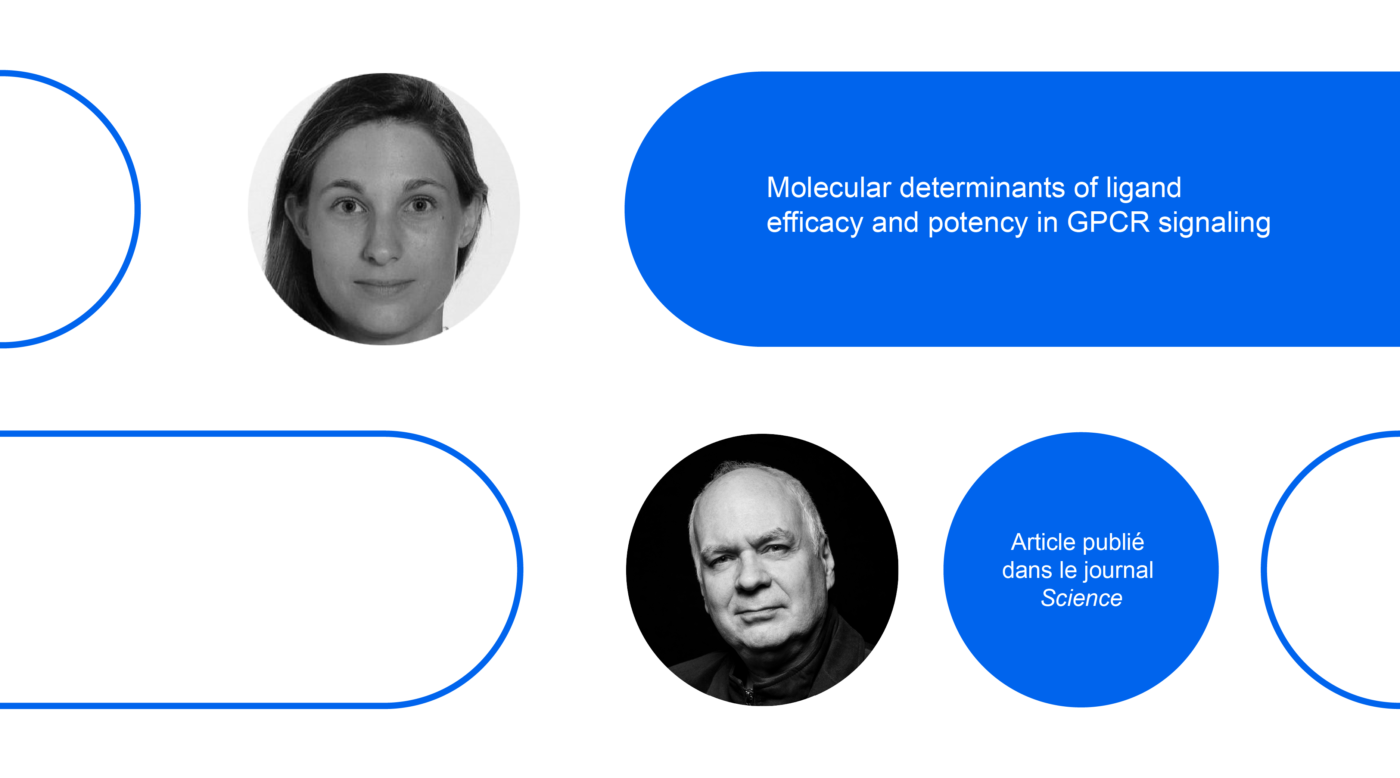News
Decoding the molecular and structural bases of signal transduction to design more effective drugs
Published on January 25, 2024
G protein-coupled receptors (GPCRs) are bound by a wide range of ligands: over 500 molecules naturally present in humans (such as hormones), as well as a third of approved drugs, target them. The binding of these ligands to GPCRs leads to the selective activation of different signaling pathways, which are involved in processes as varied as metabolism, cell growth and immune responses. Michel Bouvier, Director of the Molecular Pharmacology Research Unit and Chief Executive Officer of IRIC, and his collaborators set out to better understand, at the atomic level, the molecular and structural determinants that dictate a ligand’s ability to activate a GPCR. The work, a collaboration with Madan Babu, researcher at Ste-Jude Research Hospital, and Brian Kobilka, researcher at Stanford University and co-recipient of the 2012 Nobel Prize in Chemistry, was conducted by Franziska Heidenreich while she was a postdoctoral fellow in the Bouvier laboratory. It is published in the journal Science.
Systematic testing to decode potency and efficacy
The ability of a ligand to induce signaling is expressed in terms of the pharmacological parameters of potency (the concentration of ligand required to obtain the expected response) and efficacy (the maximum response produced by a given ligand). The team set out to systematically understand how receptors, through their molecular sequence and structure, decode the atomic information contained in ligands outside the cell and translate it into potency and efficacy inside the cell.
To achieve this, an integrative approach combining structural biology, high-throughput site-directed mutagenesis and live-cell signaling detection with BRET (bioluminescence resonance energy transfer) biosensors has been developed.
Elucidating intramolecular relays for information propagation
The research team was thus able to measure the pharmacological significance of all the structural perturbations tested.
“The originality of this study lies in the discovery of distinct intramolecular allosteric networks which selectively dictate the pharmacological potency or efficacy of ligands activating GPCRs in a semi-independent manner”, emphasizes Michel Bouvier.
As GPCRs represent the largest family of therapeutic targets, this work opens up the possibility of developing more effective drugs by designing molecules with optimal potency and efficacy.
Cited study
Heydenreich FM, Marti-Solano M, Sandhu M, Kobilka BKK, Bouvier M, Babu M. Molecular determinants of ligand efficacy and potency in GPCR signaling. Science 382, eadh1859 (2023). DOI:10.1126/science.adh1859
